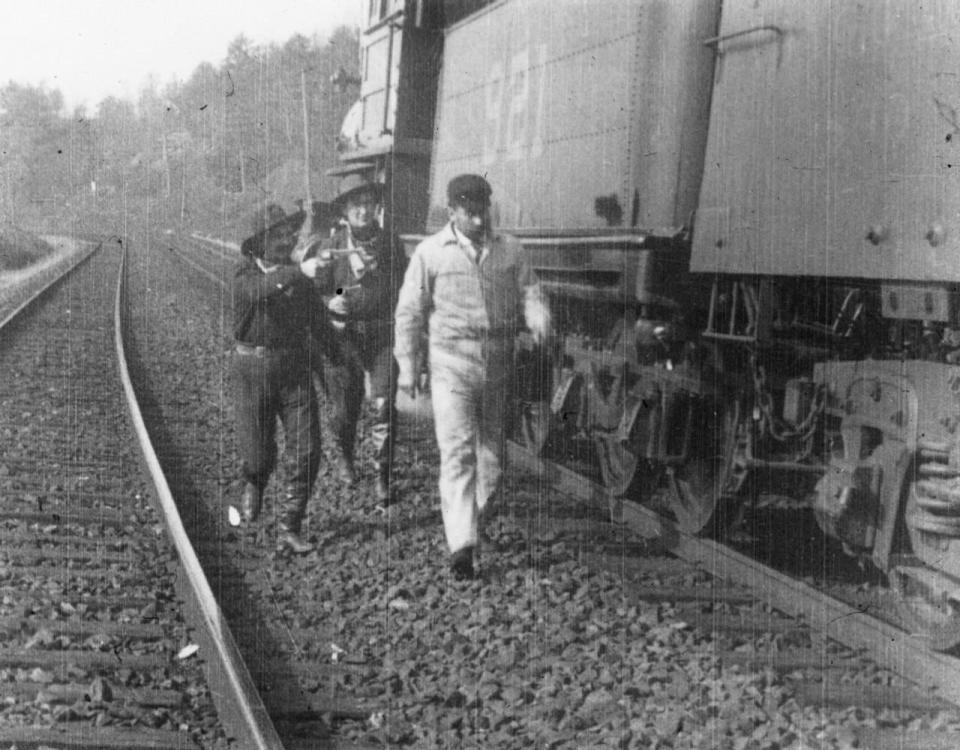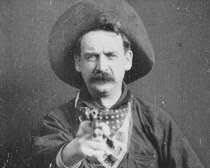'The Great Train Robbery': It's wild, but historic Western movie was filmed in Paterson
- Oops!Something went wrong.Please try again later.
- Oops!Something went wrong.Please try again later.
- Oops!Something went wrong.Please try again later.
It wasn't even close to the West, but the wilds of Paterson proved close enough in 1903.
Filmed that fall and released just weeks later in December 1903, "The Great Train Robbery" became the first relevant cinematic narrative in American motion picture history.
The story came from Edwin S. Porter, a cameraman with the Edison Company. The name was borrowed from a novelette turned stage hit. The concept was a spin on tales from the then-not-so-old West, a tradition that would cement itself as a cornerstone of American theater for most of the 20th century.

State records claim Porter cribbed the plot from the Aug. 29, 1900 robbery along the Union Pacific Railroad executed by Butch Cassidy's "Hole in the Wall" gang in Wyoming.
Porter and others associated with Edison before the fall of 1903 primarily filmed vaudeville skits, prizefights and public spectacles for brief moving pictures. William Kennedy Laurie Dickson developed the first movie viewer and movie camera at Thomas Edison's West Orange laboratory between 1888 and 1892. The finished devices resembled bathroom vanities, but instead of a sink there was a peephole viewer to see the film move rapidly over a lamp at the bottom.
Early motion pictures had about 50 feet of film. "The Great Train Robbery," at 14 minutes, had more than 700.
Though some debate remains today, it and many other early publications claim most if not all of the movie's exterior train shots were filmed in Paterson, specifically in the valley north of Lambert Castle near where Interstate 80 runs today.
Before the highway was built, that area was home to the old Delaware, Lackawanna and Western Railroad. Porter, according to reports, had found audiences were captivated by thrill scenes, fire engine runs, rescues and fast trains. He also had connections at the railroad from prior productions.

While securing the set and renting a train proved attainable, not everything went smoothly, according to Terry Ramsaye's 1926 book on early motion pictures "A Million and One Nights." During one of the scenes, a dummy was tossed from the train as it neared a high bridge over the Passaic River. That dummy landed right in front of a packed trolley car on the adjacent tracks, Ramsaye wrote.
"The emergency brakes screeched, and the car came to a violent stop, filled with fainting and screaming passengers," Ramsaye wrote. "A riot followed when the unintended victims of the scene discovered the deception."
The movie's riding scenes were filmed further south at Essex County Park, according to most reports. One actor, Gilbert M. Anderson, never made it, however. He was resigned to doing just the train scenes after falling off his horse on the ride to the park from a West Orange stable. Anderson, a vaudeville performer who would become famous as "Bronco Billy," had previously assured Porter he was fit for a role as a train robber as he was "born on a horse," according to Ramsaye.
Most of the film's main actors hailed from New York or the Midwest and were selected for their ability to execute stunts. Porter recruited some who were unemployed. Anderson showed up at the Edison studio looking for work.
The film used a massive cast, cross cuts, location swaps and chase scenes. It also faithfully pitted the law against a scoundrel, setting the foundation of Westerns. Though silent, the film had no titles. Its plot was that basic.
More: Rare Colt revolver made in Paterson expected to be sold at auction for more than $250,000
Newspaper advertisements for the film started popping up in newspapers in mid-December. Among the first was for Young's Pier in Atlantic City. The movie was 10 cents to see and 25 cents for a reserved seat. It became the most popular and commercially successful film of its time. Porter, a Pennsylvania native, followed it up with the similar, but similarly successful "The Great Bank Robbery," honing in on the self-explanatory movie title market.
This article originally appeared on NorthJersey.com: It's wild, but this historic Western movie was filmed in Paterson

